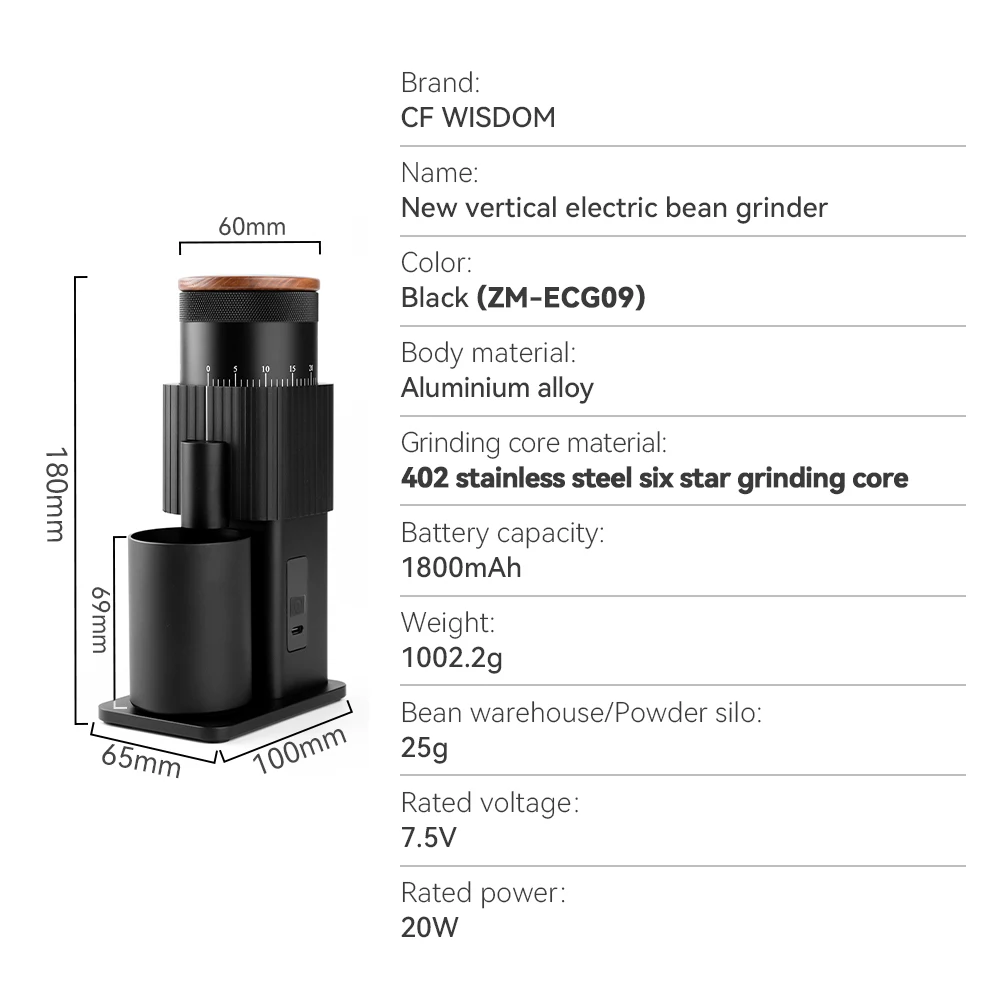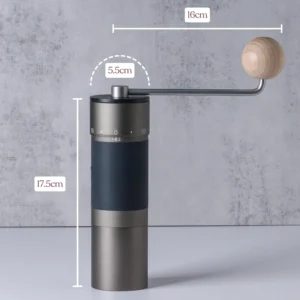Understanding Why Grind Consistency Is Critical for Espresso Excellence
The journey to a perfect espresso begins long before water touches coffee—it starts with how you grind your beans. Grind consistency refers to having coffee particles that are uniform in size, and this seemingly simple factor dramatically influences the quality of your espresso.
When we talk about particle size distribution (PSD), we’re referring to the range of particle sizes in your ground coffee. Ideally, these particles should be as uniform as possible. Why? Because water interacts differently with particles of different sizes:
- Larger particles (often called “boulders”) under-extract, releasing too few flavor compounds and creating sourness
- Smaller particles (known as “fines”) over-extract, releasing too many bitter compounds
- Uneven particle sizes cause water to channel through the path of least resistance in your puck, resulting in both under and over-extraction simultaneously
This inconsistency directly affects extraction yield—the percentage of coffee solids that end up in your cup. With inconsistent grounds, you might have a 15% extraction from some particles and 30% from others, rather than the ideal 18-22% from all particles.
The impact on flavor is unmistakable. Even extraction from consistent grounds creates balance between:
– Sweetness from properly extracted sugars
– Controlled acidity for brightness
– Full body from optimally extracted oils and compounds
Research on extraction kinetics confirms that particle size uniformity is the single biggest predictor of extraction evenness, which directly correlates with flavor clarity and balance. Before diving deeper into techniques, understanding this foundation helps explain why mastering espresso precision grind settings becomes so critical to consistently excellent shots.
Identifying the Visual and Tactile Signs of Perfect Espresso Grind
Recognizing the right espresso grind consistency requires engaging multiple senses. The visual appearance of a properly ground espresso should resemble fine table salt or granulated sugar—not as fine as powdered sugar but significantly finer than sand. When examining ground coffee for espresso, look for:
- Even particle size throughout the grounds
- A somewhat fluffy texture rather than compacted grounds
- Minimal clumping (though some clumping is normal due to static and oils)
- No visible large chunks mixed with powder
The tactile experience offers equally important feedback. Between your fingers, ideal espresso grounds should:
– Feel smooth yet slightly gritty
– Clump slightly when pressed but break apart easily
– Not feel powdery like flour or gritty like sand
– Stick slightly to fingertips due to oils but not be persistently sticky
When distributed in the portafilter, properly ground coffee should:
– Create an even, level bed with minimal effort
– Show consistent texture across the surface
– Have a slight springiness when tamped
Remember, grind size (how fine or coarse the particles are) differs from grind consistency (how uniform those particles are). You might achieve the correct average size but still face extraction problems if the consistency is poor. Many home baristas find that exploring the perfect espresso grind texture guide helps develop this sensory awareness that distinguishes exceptional grounds from merely adequate ones.
Choosing the Right Grinder: The Foundation of Consistency
The grinder you select fundamentally determines your potential for achieving grind consistency. This choice matters more than almost any other factor in your espresso setup.
Blade vs. Burr Grinders:
| Grinder Type | Consistency | Particle Distribution | Suitability for Espresso |
|---|---|---|---|
| Blade | Poor | Highly varied, many fines and boulders | Unsuitable |
| Burr | Good to Excellent | Controlled, narrower range | Suitable to Ideal |
Blade grinders operate like blenders, randomly chopping beans into uneven particles. No matter how carefully you use them, they cannot produce the consistency necessary for espresso. Burr grinders, however, crush beans between two textured surfaces, creating more uniform particles.
Burr Design Considerations:
Conical burrs feature a cone-shaped center burr that rotates within an outer ring. They typically:
– Produce slightly more “fines” (very small particles)
– Generate less heat during grinding
– Create a somewhat broader particle distribution that some find adds complexity to espresso
Flat burrs consist of two parallel rings that grind beans between them. These generally:
– Produce more uniform particle sizes
– Generate slightly more heat (though negligible in quality grinders)
– Create more consistent extractions with clarity of flavor notes
Burr material matters too. Steel burrs offer:
– Sharper edges for precise cutting
– Longer lifespan with proper maintenance
– Better performance with oilier or darker roasts
Ceramic burrs provide:
– Heat resistance
– Durability against non-coffee foreign objects
For true espresso consistency, look for grinders featuring:
– Stepless adjustment (infinite small adjustments rather than preset notches)
– Larger burr size (generally 50mm or larger)
– Lower grind retention (less old coffee trapped in the grinding mechanism)
– Stable motor with consistent RPM under load
Our collection of specialized burr grinders is designed specifically with these consistency factors in mind. The impact burr shape has on espresso consistency cannot be overstated, as the geometry of cutting surfaces directly influences particle distribution.
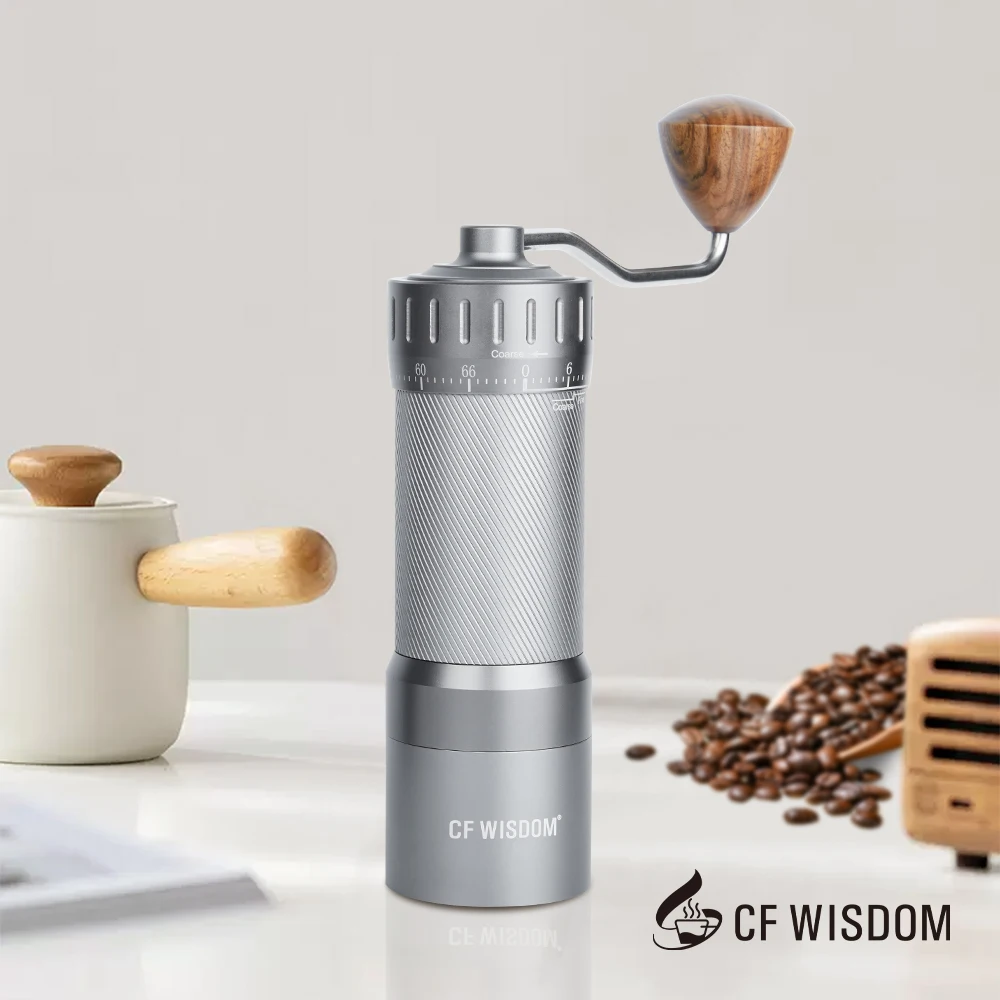
Dialing In Your Grinder: The Methodical Approach
Achieving perfect espresso grind consistency requires a disciplined approach to grinder calibration. This methodical dialing-in process helps you find the sweet spot for your specific beans and equipment.
Start by establishing a baseline:
1. Begin with a setting that produces a shot running for approximately 25-30 seconds for a standard 2:1 ratio (e.g., 18g coffee yielding 36g espresso)
2. Pull a shot and observe both the flow rate and timing
3. Taste the result and note the flavor characteristics
Based on your results, make incremental adjustments:
- If the shot runs too quickly (under 20 seconds):
- The grind is likely too coarse
- Adjust finer by small increments (1/4 turn or less on most grinders)
Excess flow indicates channels forming through inconsistently packed grounds
If the shot runs too slowly (over 35 seconds):
- The grind is likely too fine
- Adjust slightly coarser
- Watch for signs of choking (extremely slow dripping or no flow)
Keep a log of your adjustments with notes on:
– Grinder setting
– Dose weight
– Yield weight
– Shot time
– Taste notes
– Visual observations of the puck after extraction
This record becomes invaluable as you work with different beans or when returning to favorites. Remember that grind setting isn’t the only factor affecting extraction—dose, temperature, and tamping also play roles, but grind consistency provides the foundation.
For those new to the process, our guide on adjusting espresso grind size provides step-by-step instructions to simplify this sometimes intimidating process. The key is making one small change at a time, then evaluating the results before making further adjustments.
Essential Grinder Maintenance for Optimal Consistency
Even the finest grinder will deliver inconsistent results without proper maintenance. Regular cleaning and care directly impact grind quality and consistency.
Cleaning Schedule Based on Usage:
- Light home use (1-3 shots daily): Deep clean every 2-3 weeks
- Medium home use (4-8 shots daily): Deep clean weekly
- Heavy use (9+ shots daily): Deep clean twice weekly
- Regardless of frequency: Quick cleaning after each grinding session
Step-by-Step Cleaning Process:
- Consult your grinder’s manual for disassembly instructions
- Remove accessible beans and use a soft brush to clear residual grounds
- For burrs:
– Remove according to manufacturer instructions
– Clean with a dry brush (never water for steel burrs)
– Use grinder cleaning tablets monthly to remove oils - Clean the grounds path with a brush and vacuum if possible
- Reassemble carefully, ensuring proper alignment
Checking Burr Alignment:
- With the grinder unplugged, remove upper burr
- Inspect for uneven wear patterns, which indicate alignment issues
- Check that burr carriers sit flush with no wobble
- Follow manufacturer recommendations for alignment adjustment
Signs That Burrs Need Replacement:
- Noticeably uneven grind despite proper cleaning
- Inability to achieve fine enough grind for espresso
- Visible chips or damage on burr teeth
- Increased noise or resistance during grinding
- Dramatically increased grinding time
Proper maintenance not only ensures consistency but also extends the life of your equipment. Quality burrs can last for years with proper care—steel burrs typically handle 500-1500 pounds of coffee before replacement, while ceramic burrs may last even longer.
Our manual burr grinder maintenance guide provides detailed care instructions specific to hand grinders, which often require slightly different maintenance approaches than their electric counterparts.
Pre-Grinding Techniques for Enhanced Uniformity
Before coffee touches your grinder, several preparation techniques can significantly improve consistency in your final grounds.
Precise Bean Weighing:
Consistent dose weight is fundamental for reproducible results. Invest in a scale with 0.1g precision and weigh each dose individually rather than estimating. This precision ensures:
– Consistent grinder load, which affects how the burrs interact with beans
– Reproducible puck density and depth
– Balanced extraction from shot to shot
Ross Droplet Technique (RDT):
Static electricity causes fine particles to cling to surfaces and clump together, creating inconsistency. The RDT minimizes this problem:
1. Add 1-2 drops of water to your whole beans (using a spray bottle or damp spoon)
2. Gently stir beans to distribute minimal moisture
3. Grind immediately
This tiny amount of moisture reduces static by up to 80% according to home barista testing, creating more uniform grounds distribution without affecting taste.
Bean Storage for Consistency:
How you store beans affects grinding performance:
– Store in an airtight container away from light
– Keep at room temperature for beans used within 1-2 weeks
– Avoid refrigeration unless for long-term storage, as condensation forms when beans warm up
– Allow beans to rest 7-14 days after roasting before using for espresso
Beans that are too fresh (1-5 days after roasting) contain excess CO₂ that can create inconsistent extraction and false crema, while beans beyond 30 days post-roast may grind more easily but with diminished flavor compounds.
Our selection of grinders specifically designed for espresso preparation complement these pre-grinding techniques, with features that minimize retention and static buildup.
Post-Grind Handling: Preserving the Consistency You’ve Achieved
Once you’ve produced consistent grounds, maintaining that uniformity through distribution and tamping is crucial for even extraction.
Weiss Distribution Technique (WDT):
This method breaks up clumps and creates an even density throughout the portafilter:
- Prepare a WDT tool (several thin needles or wires in a cork or handle)
- Grind directly into the portafilter or dosing cup
- Insert the needles and make gentle stirring motions from bottom to top
- Continue until all visible clumps are broken up and grounds appear uniform
- Tap the portafilter gently to level the surface before tamping
Distribution Methods for Even Density:
Beyond WDT, ensure proper distribution by:
– Using a distribution tool that sweeps across the basket surface at a fixed height
– Performing the North-South-East-West finger sweep if not using tools
– Avoiding excessive downward pressure during distribution, which creates density differences
Consistent Tamping Technique:
Your tamping approach should complement your grinding efforts:
1. Apply approximately 30 pounds of pressure (practice on a bathroom scale)
2. Focus more on evenness than pressure—a level tamp is crucial
3. Use a calibrated tamper if struggling with consistency
4. Avoid multiple tamps or twisting motions that can disrupt the puck structure
Timing Between Grinding and Brewing:
Extract within 1-2 minutes of grinding when possible. Ground coffee begins oxidizing immediately, and volatile compounds that contribute to flavor and crema start dissipating. This timing becomes especially crucial when working with espresso grind settings for perfect shots that are finely calibrated for specific extraction parameters.
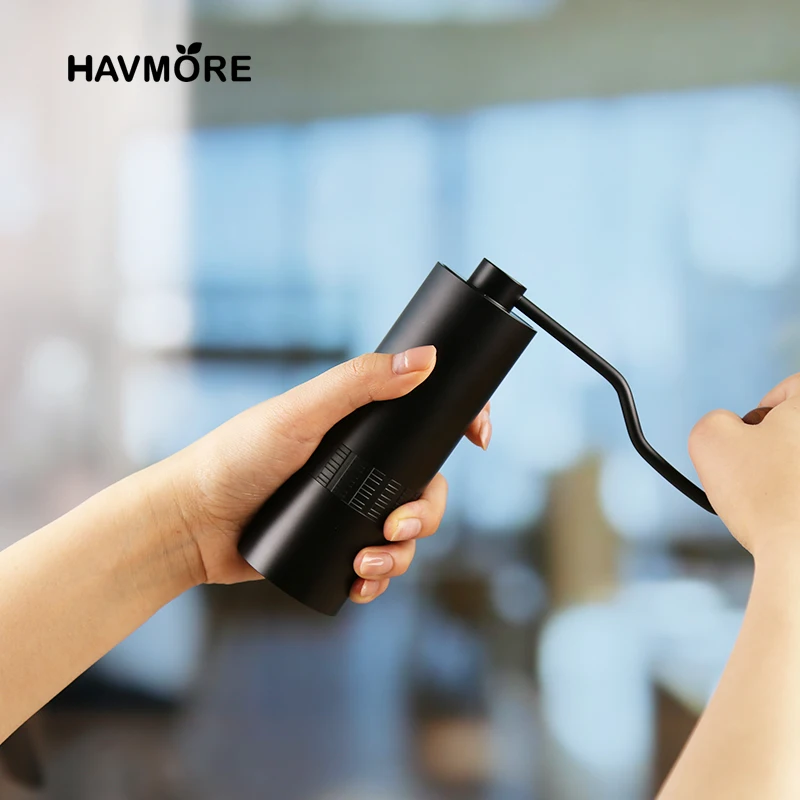
Troubleshooting Common Grind Consistency Problems
Even experienced home baristas encounter grind consistency issues. Here’s how to identify and solve the most common problems:
Fast Shots (Under 20 seconds)
– Problem: Grind too coarse or inconsistent with many large particles
– Solution: Adjust grinder finer, check for proper burr alignment, ensure even distribution
– Diagnosis: Examine used puck for channeling (holes or uneven surface)
Slow Shots (Over 35 seconds)
– Problem: Grind too fine or excessive fines causing compaction
– Solution: Adjust slightly coarser, check burrs for damage, examine distribution technique
– Diagnosis: Look for choking pattern where flow starts then stops
Inconsistent Shot Times Despite Unchanged Settings
– Problem: Grinder retention causing old and new grounds to mix
– Solution: Implement purging (discard first few seconds of grinding when changing settings)
– Diagnosis: Notice if shot times vary more after grinder has been idle
Excessive Clumping
– Problem: Static buildup, oily beans, or humidity issues
– Solution: Implement RDT (tiny water droplet), ensure grinder is clean, check bean freshness
– Diagnosis: Visually inspect grounds for multiple large clumps that resist breaking apart
Visible Channeling Despite Proper Tamping
– Problem: Bimodal distribution (too many fines and boulders)
– Solution: Check burr quality and alignment, consider upgrading grinder if persistent
– Diagnosis: Examine spent puck for multiple holes or side channels
Uneven Extraction (Sour and Bitter Simultaneously)
– Problem: Inconsistent particle sizes causing some areas to over-extract while others under-extract
– Solution: Improve distribution techniques, check grinder performance, ensure thorough WDT
– Diagnosis: Blonding occurs rapidly but shot continues to run dark in areas
For persistent issues, our guide to troubleshooting espresso grind issues provides a systematic approach to isolating variables and solving complex consistency problems.
How Different Beans and Roast Levels Affect Grind Consistency
Not all coffee beans behave the same way when ground, requiring adjustments to maintain consistency across different varieties.
Bean Density Variations:
- High-elevation beans (often from Ethiopia, Kenya) tend to be denser and harder
- Lower-elevation beans (often from Brazil, Indonesia) are typically less dense
- Denser beans require more force to grind evenly and may produce more fines
Roast Level Adjustments:
| Roast Level | Grind Adjustment | Particle Behavior | Extraction Tendency |
|---|---|---|---|
| Light | Finer grind needed | Produces fewer fines | Tends to under-extract |
| Medium | Baseline setting | Balanced behavior | Standard extraction |
| Dark | Coarser grind needed | Produces more fines | Tends to over-extract |
Dark roasts are more brittle and fracture more easily during grinding, creating additional fines even at coarser settings. Light roasts are denser and require a finer setting to achieve proper extraction rates.
Bean Age Timeline:
As beans age after roasting, they release carbon dioxide and become drier, affecting grinding behavior:
– 1-7 days: High gas content can create inconsistent grinding and extraction
– 7-14 days: Prime window for most espresso (stable moisture, appropriate degassing)
– 14-30 days: Gradually requires finer grinding as beans dry
– 30+ days: Significantly finer grinding needed, flavor compounds diminishing
Understanding these variables helps you anticipate necessary adjustments rather than reacting to problems. For more detailed guidance on this topic, our article about adjusting grind size for light versus dark roasts provides specific recommendations for maintaining consistency across roast profiles.
Is Your Grinder Holding You Back? When to Consider Upgrading
Sometimes, despite perfect technique, your equipment limits your consistency potential. Here are signs that your grinder might be the barrier to better espresso:
- Unable to make small enough adjustments (steps between settings are too large)
- Significant variation in shot times despite identical technique
- Visible mixture of very fine powder and larger particles
- Inability to grind fine enough for proper extraction times
- Excessive heat buildup during grinding
- Declining performance that cleaning doesn’t resolve
When evaluating potential upgrades, prioritize these consistency-enhancing features:
- Stepless or micro-stepped adjustment mechanisms
- Larger burr diameter (generally 50mm+)
- Proven burr geometry designed specifically for espresso
- Low retention design (less old coffee trapped in the grinding path)
- Stable motor that maintains consistent RPM under load
- Quality bearings that ensure the burrs remain aligned
A grinder upgrade often delivers more noticeable improvement to shot quality than any other equipment change. Our collection of high-precision grinders features models specifically engineered to overcome the limitations of entry-level equipment.
Fine Adjustment Hand Grinder, Precision Manual Grinder, Travel Coffee Grinder
Price range: $185.11 through $494.63 Select options This product has multiple variants. The options may be chosen on the product pageManual Burr Mill, Manual Coffee Grinder Stainless Steel, Manual Coffee Mill Grinder, Mechanical Coffee Grinder
Price range: $127.26 through $130.32 Select options This product has multiple variants. The options may be chosen on the product pageHand Burr Grinder, Manual Coffee Grinder Stainless Steel, Precision Manual Grinder
Price range: $183.64 through $187.52 Select options This product has multiple variants. The options may be chosen on the product pageHand Crank Coffee Grinder, Manual Burr Mill, Manual Coffee Bean Grinder
Price range: $2,053.84 through $2,918.42 Select options This product has multiple variants. The options may be chosen on the product pageHand Crank Coffee Grinder, Manual Coffee Grinder for Espresso, Manual Coffee Grinder Stainless Steel
$349.15 Select options This product has multiple variants. The options may be chosen on the product page
Advanced Techniques: Going Beyond Basic Consistency
Once you’ve mastered the fundamentals, these advanced techniques can further refine your grind consistency:
Sifting for Particle Size Control:
While optional for most home baristas, some enthusiasts use fine mesh sieves to remove outlier particles:
– Use stacked sieves of different mesh sizes to separate particles
– Remove the largest and smallest particles for more uniform extraction
– Requires additional time but can deliver extremely consistent results
Single-Dosing Workflow Optimization:
Single-dosing (grinding only what you need for each shot) improves consistency by:
– Eliminating popcorning (beans jumping during grinding)
– Using weighted “dummy beans” or spinners above the beans
– Creating a more consistent pressure on the beans throughout grinding
– Allowing for easier bean changes without contamination
Environmental Consistency Considerations:
Advanced home baristas also account for:
– Maintaining consistent room humidity (affects static and clumping)
– Monitoring grinder temperature (warm grinders produce different results than cold ones)
– Creating standard protocols for each step of grinding and preparation
These refinements may seem obsessive, but they address the factors affecting grind consistency that become apparent once basics are mastered. Each small improvement compounds to create noticeably better extraction.
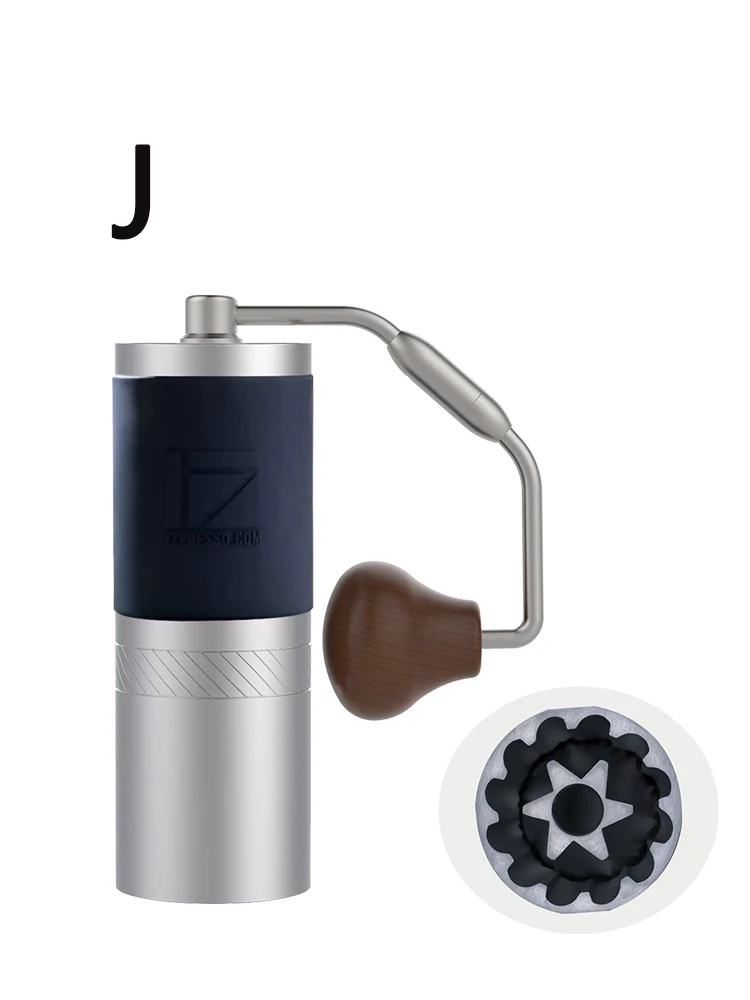
Why Is My Perfect Grind Today Different Tomorrow? Factors Affecting Consistency
Even when you follow identical procedures, day-to-day variations can affect your espresso grind consistency. Understanding these variables helps you adapt appropriately:
How does humidity affect my grind consistency?
Higher humidity reduces static but increases clumping tendencies. In dry conditions, grounds may become more prone to static buildup and uneven distribution. During humid weather, you may need to adjust slightly coarser to compensate for clumping and slower flow rates.
Why do I need different settings as beans age?
Coffee beans continue releasing carbon dioxide and losing moisture after roasting. This changes their brittleness and how they fracture during grinding. As beans age, you’ll typically need to adjust finer to maintain the same flow rate, sometimes by considerable amounts over weeks.
Does grinder temperature really matter?
Yes, particularly with advanced setups. When grinders heat up through continued use, thermal expansion can subtly change the distance between burrs. This is why many cafes “season” their grinders by running coffee through them before dialing in for the day.
Why does my first morning shot behave differently?
Retained grounds from previous sessions can be at different moisture levels and age than your fresh beans. Additionally, cold burrs and grinder components behave differently than when warmed up. Some users run a small “sacrificial” dose through the grinder before their actual espresso dose.
For those struggling with day-to-day inconsistency, our article addressing why coffee grinders produce inconsistent results explores these variables in greater detail and offers practical solutions.
Building Consistency Into Your Espresso Routine
Creating a methodical workflow that incorporates all consistency techniques is the key to reliable results. Here’s a structured approach to making consistency habitual:
Daily Espresso Workflow:
Preparation Stage
– Weigh beans precisely (0.1g accuracy)
– Apply RDT if needed (single drop of water)
– Ensure grinder is clean and purged of old groundsGrinding Stage
– Grind directly into portafilter or dosing cup
– Monitor grind appearance for consistency
– Note any needed adjustments for next timeDistribution Stage
– Perform WDT thoroughly (30 seconds minimum)
– Level grounds using consistent technique
– Tamp evenly with consistent pressureEvaluation Stage
– Time shot and observe flow pattern
– Assess taste and extraction quality
– Document results for reference
Consistency Checklist:
- Use the same dose weight every time
- Control water temperature within 1°F
- Maintain consistent preparation techniques
- Change only one variable when troubleshooting
- Document successful settings for each coffee
When encountering extraction problems, approach troubleshooting systematically by isolating variables. Start with grind adjustment before changing dose, temperature, or other factors.
The most experienced home baristas develop consistency through disciplined repetition and careful observation. Our selection of hand grinders with fine adjustment capabilities helps maintain the precision necessary for this level of consistency in your daily ritual.
Achieving perfect espresso grind consistency isn’t simply about equipment—it’s about developing an approach that addresses every variable systematically. With these techniques and the right tools, you’ll be able to produce consistent, delicious espresso shots that showcase the full potential of your coffee beans.

